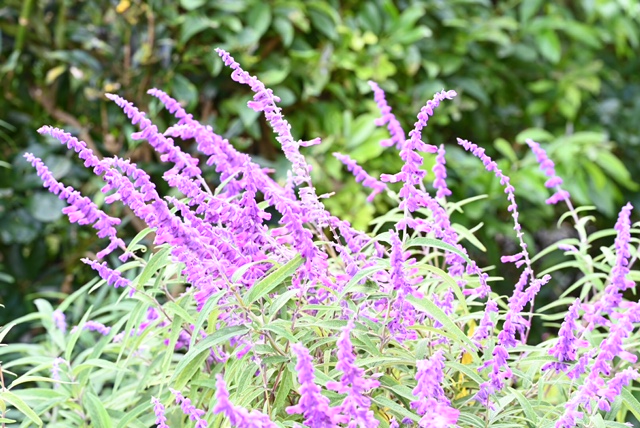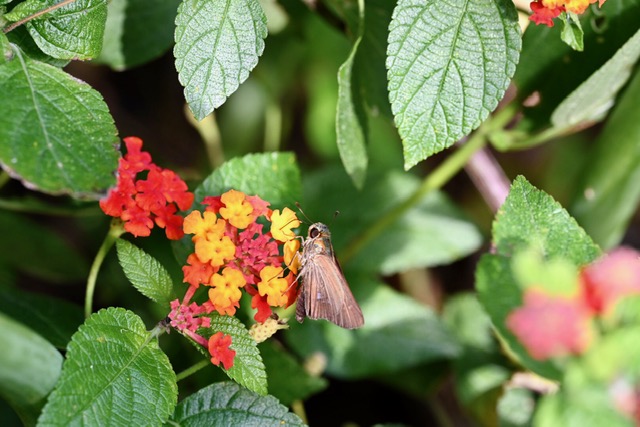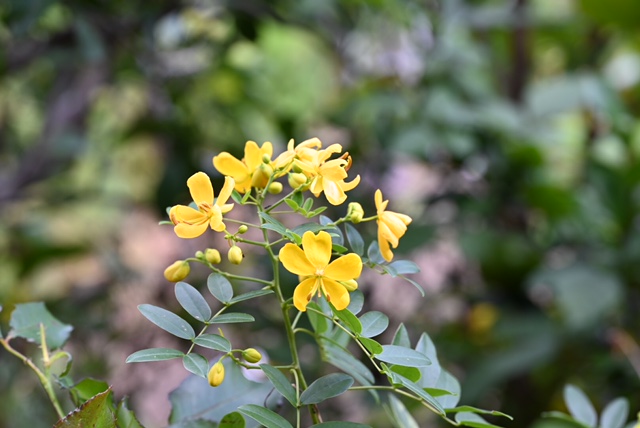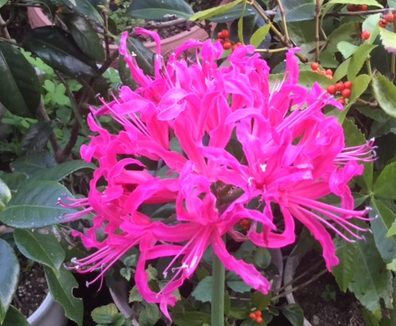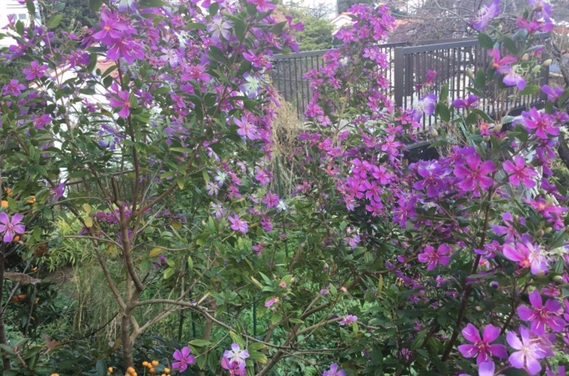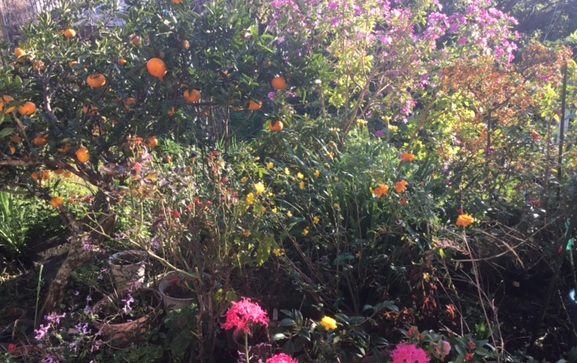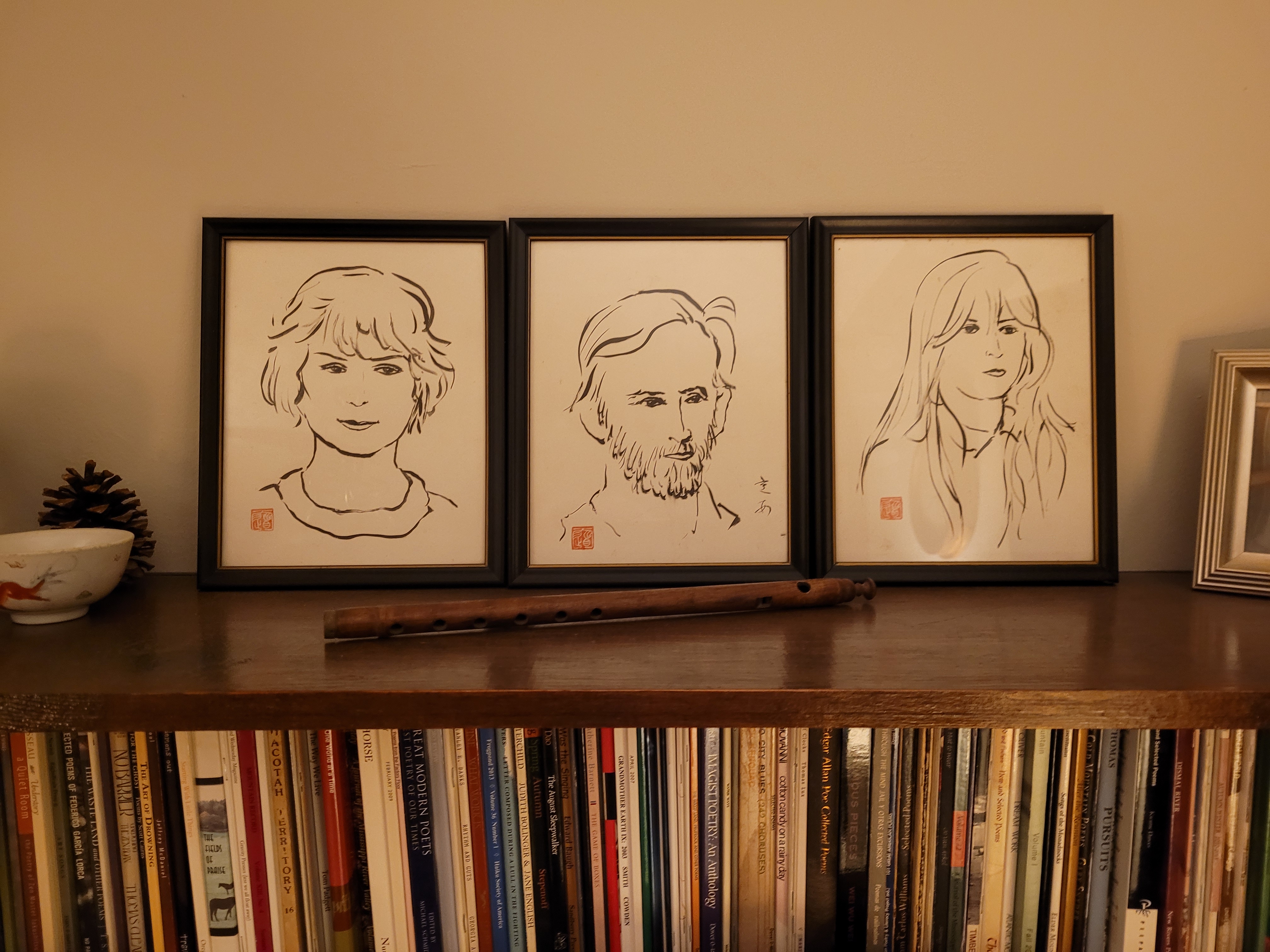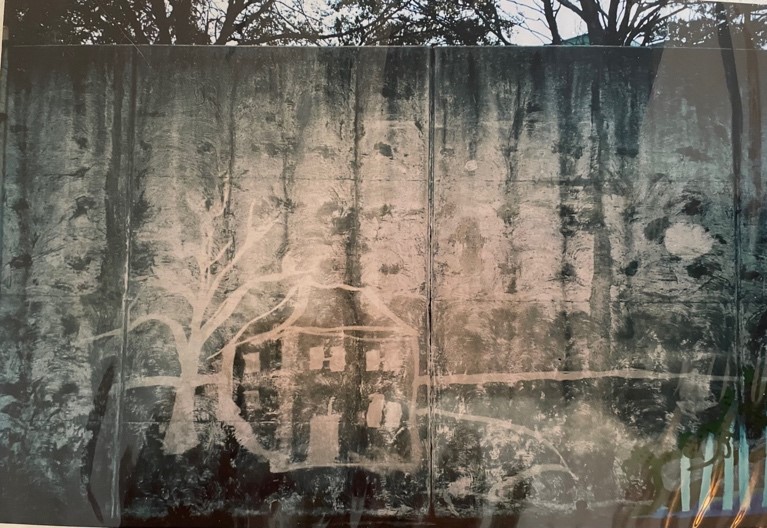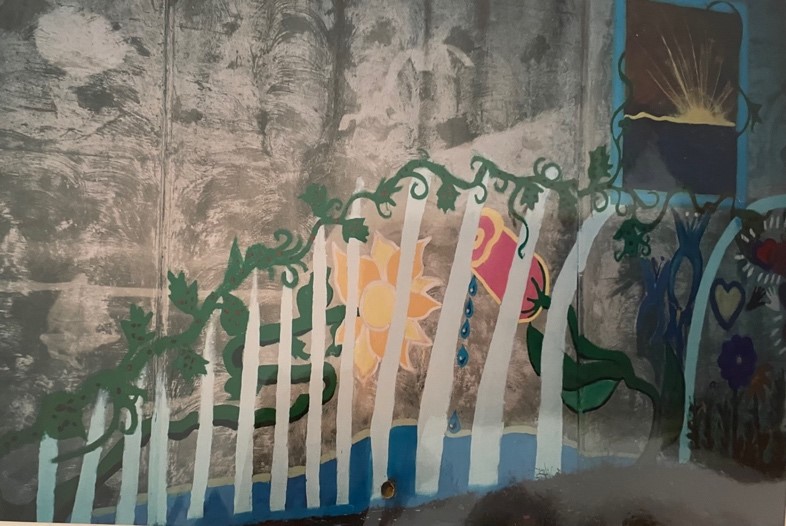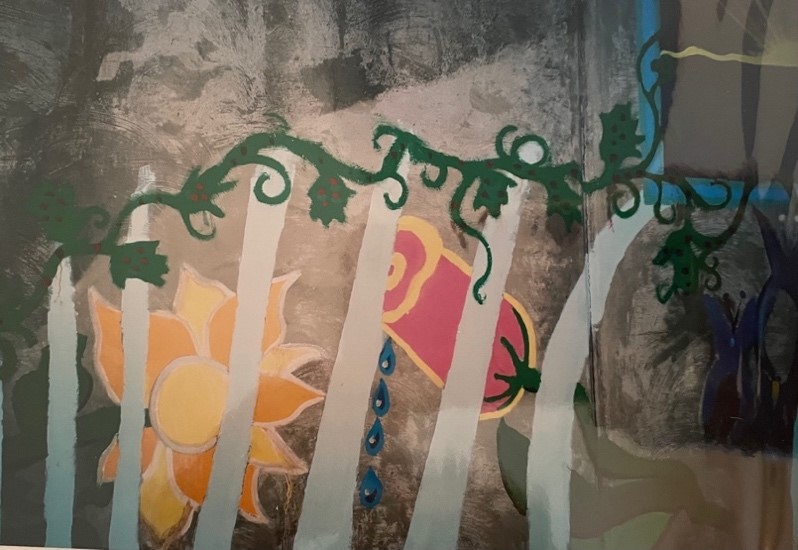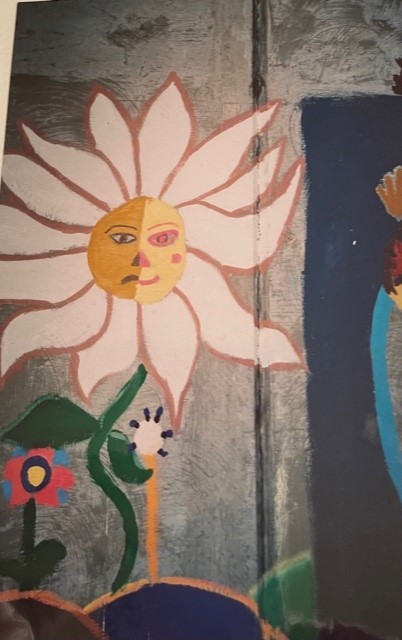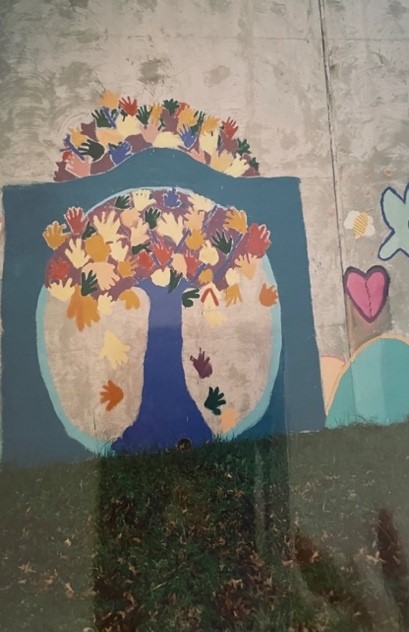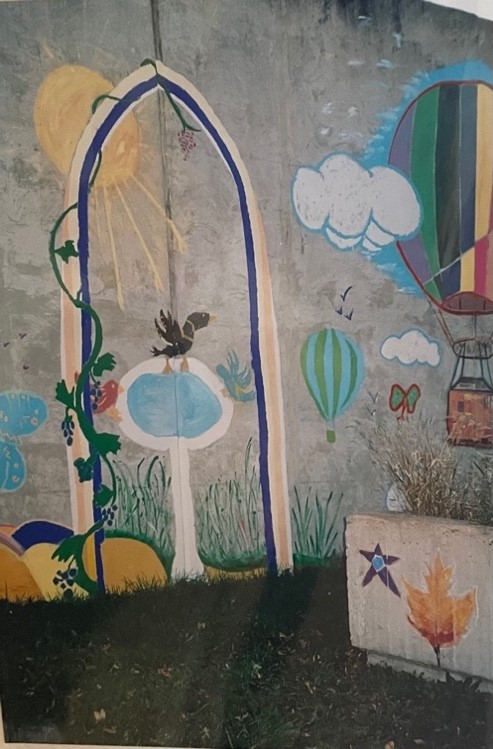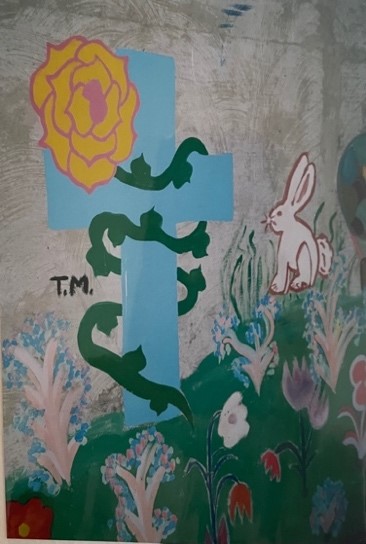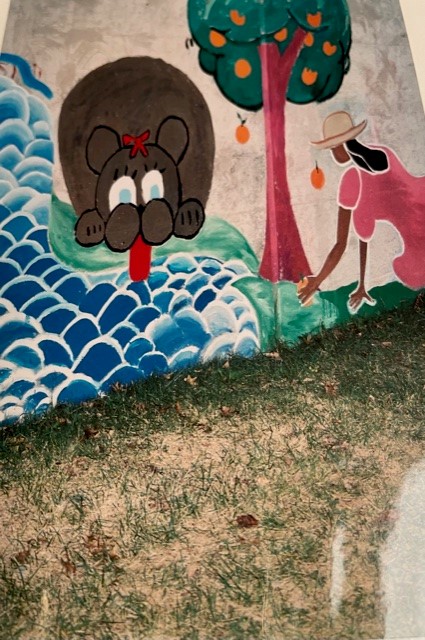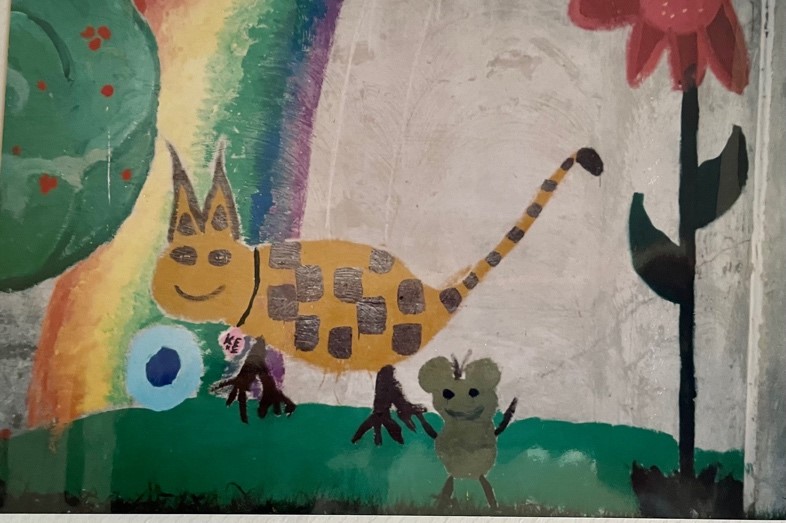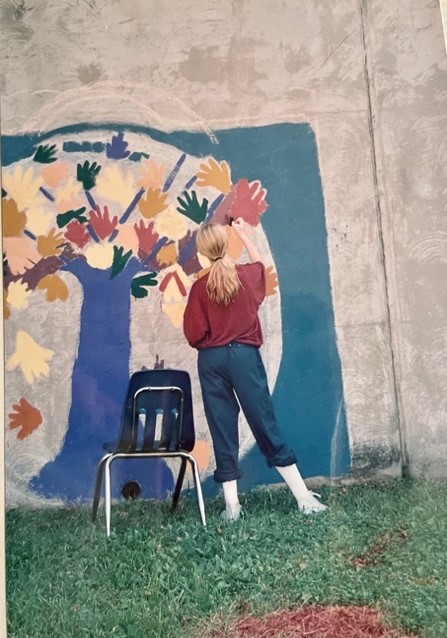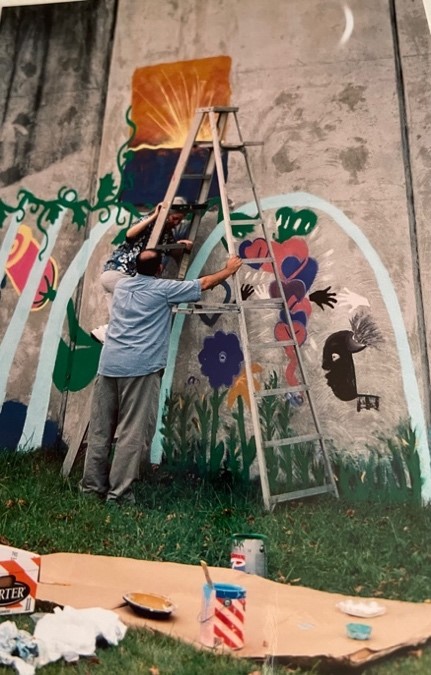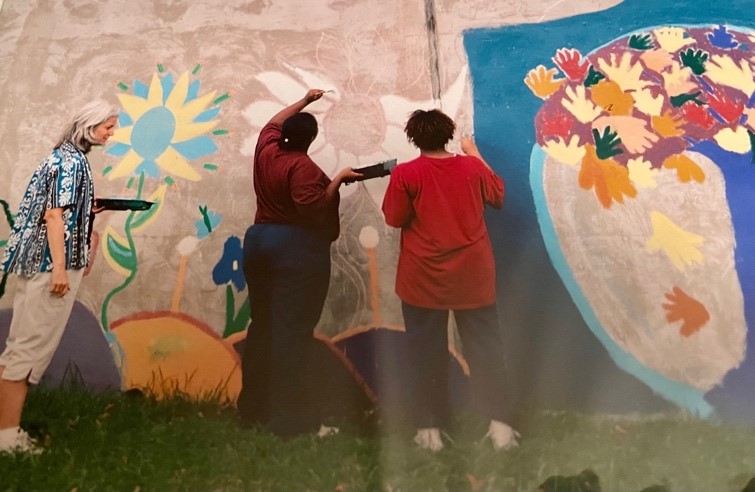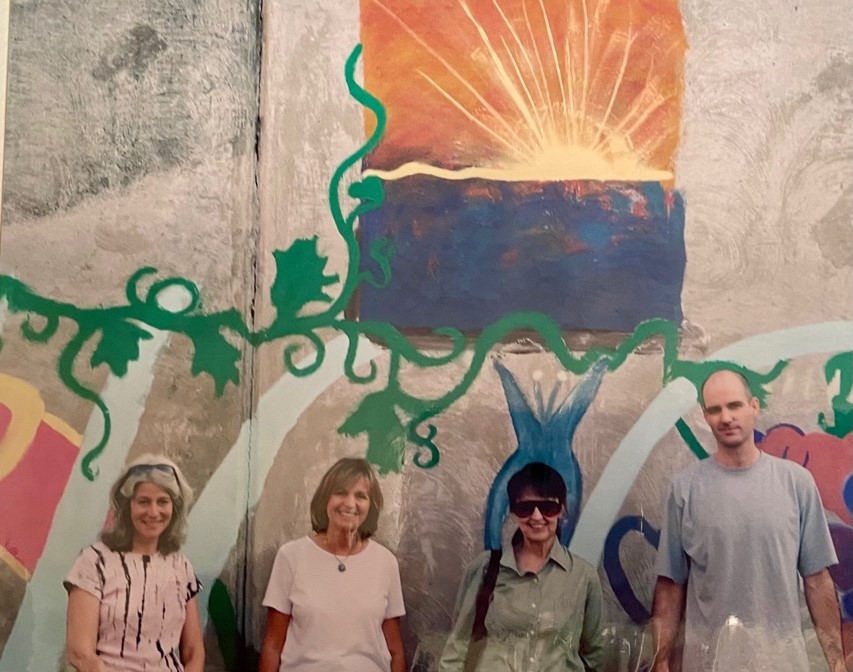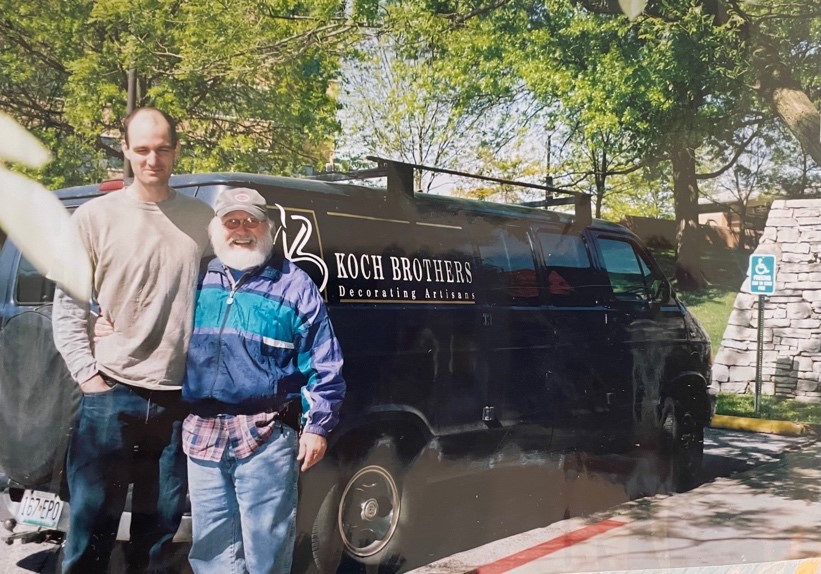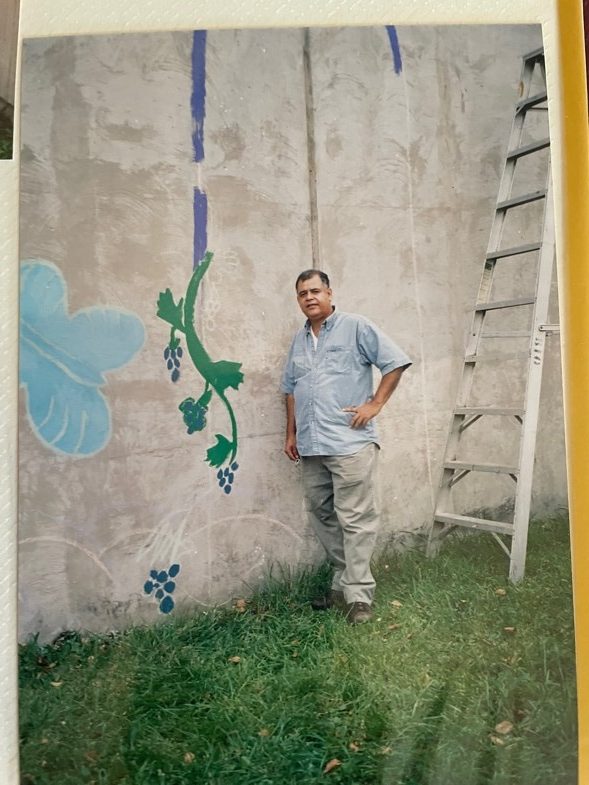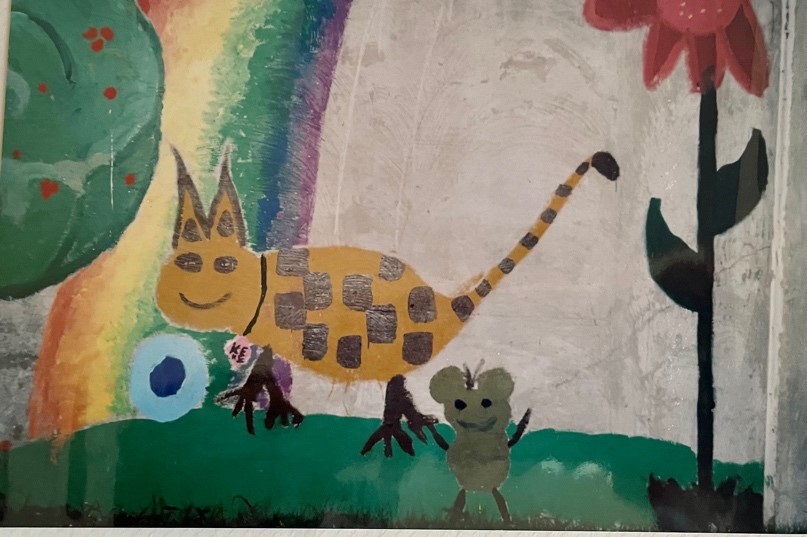Brief History of the Missouri Zen Center
Josho, our member lawyer, suggested that we may apply as a historic site to continue our present practice place and even benefit from it, as it had zoning problems in the past, which caused me to write a brief history of our center and its historical significance. The following is my personal views and memories, based on our newsletters, board member meeting minutes, registration to the state, etc.
After the first draft, mainly based on my memories and our newsletters, Dharma Life and Sangha Life, I read through the minutes of the board meetings. I felt great gratitude for all the people who have worked for the center, especially the board members, doans, members, and their family members and friends, to maintain the house and garden and to help with fundraising, especially at the Japanese Festival, Green Tree Festival, etc.
This point – the effort made by board members, ordainees, doans, members and their family members and friends who helped fundraising, etc. – demonstrates the historical proof and significance of the fact that people can run and maintain a Zen center for decades for the purpose of practicing Zen and promoting the cause of the Awakened Way. Through our lectures, events, classes at the Zen center, and visits to universities, senior high schools, churches, TV and radio stations, etc., we connected with tens of thousands of people interested in practicing Zen and the Awakened Way.
My special background of an academic career and actual Zen practice made it possible to clarify nirvana as no-wind of karma(-wind): awakening in it, prognosis and freedom by it, the unique point of a supramundane position beyond karma (action, habit, heredity: mundane way as karma-machines), dharma (norm, form: law of phenomena, truth and ethic), holy (wholly wholesome: all-inclusive healthy) truths and ways, especially the true meaning of Dependent Co-origination, etc.
These two aspects of clarifying the true meaning of the Awakened Way and the actual practice of individuals, societies (concretely as sangha, community), and the world (environment, as our three pillars of the Awakened Way, Voluntary Simplicity, and the Global Ethic, as we practiced and propagated through our classes, etc.) assure that all individuals, societies, and the world can realize the Awakened Way in peace (nirvana) and truth (bodhi: awakening and prajňā: prognosis) in our future world.
In this place a humble foreign scholar lived, clarified the profound truth of the Awakened Way, and shared it with so many people. Even if sometimes dismissed – posters vandalized or the abbot even told to go back home – the community people practiced it and kept the organization going on by cooperating and promoting its causes for a long time. Our clarification and cooperation with ordinary people are testimony to the fact that anyone, at any place, at any time, can realize the Awakened Way, going beyond karma, the Triple Poisons of desire, divisiveness, and delusion, birth, sickness, aging, and death, and realize awakening in limitless life, light, liberation, and love in holy (wholly wholesome) harmony, health, and happiness.
Prehistory
My grandfather was a Zen priest at Seisuiji, Pure Water Temple, in a town named Muramatsu, famed for its cherry blossom park, near my birth place, Ogi-no-shima (Pampas Grass Island), once in the Aga-no-kawa (Aga River), the second longest river in Japan, relocated from Yasuda-machi (Safe Rice Field Town), to the present Gosen-shi (Five Springs City), due to the Aga River separating the place to the Gosen side. My grandfather’s death caused my grandmother return to her home there. Her elder son went to Manchuria as an officer, but later became a Zen monk. So, my ancestral karma might have led me to Soto Zen, my family religion, partly.
My father, an art teacher, died from TB when I was four. My mother, while commuting between my home and a hospital in Muramatsu to see to my elder brother’s TB treatment, was killed in a traffic accident when I was in my second year of junior high school. Traffic accidents were rare in those days, as only commercial trucks or buses were seen. I was brought by my aunt to the accident site, where my mother was cut into halves; still conscious, and said, “Don’t cry, Osamu,” when I started sobbing. Becoming an orphan, I was taken to my uncle, my mother’s eldest brother, so I could study at a senior high school. This became my second home, which I always visited during my college days in Tokyo up until today.
The turning point came after I was employed by Hitachi, Ltd., the largest company in Japan in those days. My job was exporting rolling stocks to India and Pakistan. I saw newspaper pictures of the Vietnam War daily – naked children running away from the bombings, a soldier putting his gun to a man’s temple, etc. I also saw pictures of holocaust victims – naked women looking almost like skeletons covered with skin. I wanted to dedicate my life to decreasing such discrimination and destruction, and if possible to abolish war from the world.
I wanted to learn Buddhism, scientific and peaceful among religions, and especially Zen, practical and applicable to everything in daily life. So I resumed my studies at Tokyo University of Foreign Studies (graduated 1962), where I studied Buddhism under Prof. Bunyu Masutani, continuing to the graduate school of Tokyo University to study Buddhism and Indian Philosophies, where I studied under Profs. Hajime Nakamura, Koshiro Tamaki, Akira Hirakawa, Kyosho Hayashima, Shindai Sekiguchi, et al. (M.A. program from 1966, Ph.D. program from 1969). I started Zen practice under Koryu Osaka, who propagated layman Zen and gave weekly lectures and sittings at the Buddhist Youth Association at Tokyo University.
While I was in the doctoral program, I was fortunate to receive a Fulbright scholarship to study at Columbia University. There, I studied Buddhism under Profs. Alex Wayman, Yoshito Hakeda, et al. In the meantime, I continued my Zen practice under Rev. Kando Nakajima of the New York Zen Center, sitting at the Zen Studies Society and visiting its Daibosatsu Zendo of Rev. Eido Shimano. I took up the “Idea of Atman” under my guide Prof. H. Nakamura (esp. on the Brihd-aranyaka Upanishad), and “No Self” under my guide Prof. A. Wayman (esp. on the Milinda-panha, Questions of Menander and the Tripitaka, etc.).
Start of the Missouri Zen Center (MZC)
After finishing my M.A. and Ph.D. programs, I taught Oriental Philosophies at Washington University in 1977, and “Zen,” and “World Religions,” etc., at Nebraska University in 1978. In 1979 I started teaching Zen Buddhism at Washington University’s University College and, along with some interested students in my classes, started Zen sittings at Washington University’s International House. I, along with Jakuen Bob Eilers, the first president of our center and one of the MZC’s first ordainees by Dainin Katagiri Roshi (the first of two jukai, Precept Giving, administered by Katagiri Roshi at the MZC was on Nov. 27, 1982), et al., founded the Missouri Zen Center in 1979 with a little over a score of members. It was registered and recognized as a non-profit organization in 1980.
In those days, Zen centers were still rare, with one or none in a given state, so we named it the Missouri Zen Center, following the Minnesota Zen Center, where I practiced under Katagiri Roshi, under the recommendation of the Rev. Kando Nakajima of the New York Zen Center, receiving formal Dharma transmission from him in 1989. The Nebraska Zen Center in Omaha (led by Prof. Gordon Becker), a small group visited by Katagiri Roshi for sesshins (intensive retreat), which I also joined while teaching at the University of Nebraska, was another similarly named group.
I opened my home’s living room for sitting practice (Kodo Mike Ganio, Will Reed, Brandon Wiley, et al practicing Zazen daily) and delivered talks on Dogen’s Shobogenzo, etc., on Sundays at the Yoga Center (the present Solar Yoga Center) on Pershing near Washington University. Every Saturday evening in preparation for this I translated part of the Shobogenzo and baked pound cakes, which I carried in a large wooden box with a hot water pot for tea. Sometimes we moved our Sunday gatherings to the homes or offices of our members.
I started teaching Zen at various schools (Webster College, South Illinois University at Edwardsville, Stephens College in Columbia, high schools, etc.), churches, radio stations, etc. We had one- or two-day sesshins monthly, using our members’ homes, school facilities, etc., and some members opened their homes to other people as well. With Prof. and Ms. Hermin I started a group at SIU-Edwardsville, holding teaching sessions and sesshins. Ekan moved to Columbia and, with Prof. Jim Whitehill, Asian Studies and Religions, Stephens College in Columbia, started a weekly branch sitting, inviting me to give talks and to hold sesshins.
Our members, friends, and families helped us to keep these activities going on and expanding, offering their homes and schools for sesshins and helping to check my translations and mailing them for publication. Jakuen and Hatsuko Eilers offered tea ceremonies, and Kodo Mike Ganio helped advertise our center by making a poster that was placed in stores, schools, and bookstores with pamphlets with others. We also placed newspaper ads, appeared on radio programs, helped with NPR (National Public Radio, later International PR) fundraising, and delivered lectures to accompany presentations by Mrs. Don Sloan (Tai Chi), Will Reed (Aikido), Wiley Brandon (Yoga), et al. Our families helped with fundraising at the Kirkwood Green Tree Festival, Botanical Garden Japanese Festival, etc., and I used to make zafus and zabutons, carrying them for sesshins and instructions like Santa; later, members made them for fundraising.
During this period we started publishing the newsletter Dharma Life (first a monthly newsletter, started in 1979, changed into quarterly with the booklet format two times yearly, delivered and mailed among members, then quarterly, monthly, bimonthly, etc. by the editor’s situations – featuring articles on Buddhist teachings, event schedule, sales, etc.), along with many booklets relating to Zen and Buddhism – as Dharma Words in our newsletters, as translations in the quarterly, and as independent booklets: Manuals of Zazen, Introduction to Zen, Dogen’s works, etc. A selection of these translations of Dogen’s works was compiled for the book Limitless Life: Dogen’s World. It was originally scheduled to be published by Sotoshu Headquarters, but a new director there canceled the plan, and it was later published by the Missouri Zen Center.
Our home used full time for the MZC, my work in Japan and the U.S.A.
When we moved from our old home in Webster Groves (built in 1889, bought in 1978) to our new one in Creve Coeur (1991), we started using our old home as the Missouri Zen Center, open seven days a week, mornings and evenings. Later, the MZC was open six days a week so that some members could attend their churches on Sundays with introductory classes, monthly sesshins, yearly ordinations, etc. Members took responsibilities as board members, doans (hall keepers), fundraisings (sales of zazen goods, yard sale, hosta sale, bread sale, joining festivals, etc.), publishing newsletter, booklets, websites, blogs, etc.
By and around this time I prepared an excerpted version of my doctoral dissertation for publication, NO SELF: A Systematic Interpretation of Buddhism (published by the World Sacred Books Publishing Association, Tokyo, 1994), and I translated about 75 volumes of the Shobogenzo for my Sunday talks, as well as Dogen Zenji’s Fukanzazengi (published as part of the “Zen Classics” of the Bukkyo Dendo Kyokai, Society for the Promotion of Buddhism, English Tripitaka, 1991), Keizan Zenji’s Zazen-yojin-ki (also to be part of the BDK English Tripitaka, but later canceled to give the opportunity to another person to translate), and some excerpts from the works of Ryokan, Daichi Zenji, Kodo Sawaki Roshi, etc., for our quarterlies.
I consider these publications to be of historical significance as they clarify the meanings of dharma as form (harm) and norm (darm, from d/harma); nirvana as no wind blowing of karma(-wind); karma as action, habit, and heredity; Dependent Co-origination (engi), especially a new interpretation of the 12-limbed Dependent Co-origination as the moment to moment presentation of living, not as the popular, traditional embryo-genetic interpretation; and Zen (jhana/dhyana, chan) meditation-cum-concentration (samadhi, samapatti) as the most direct way to still karma, see Dharma, and serve and save all (Bodhisattva Way), which will contribute to the attainment of Buddhahood for all into the future.
Katagiri Roshi recommended that I visit Zuioji in Niihama, Ehime-ken, in Shikoku Island for ango (settled practice), which was realized in 1971 under Revs. Ikko Narasaki, Tsugen Narasaki, Koten Hayashi, Hokan Saito, et al., after which I received formal Dharma transmission from Tsugen Narasaki Roshi at his Keijuji, Auspicious Life Temple, in Ohzu-shi, Ehime-ken.
In 1992 I was invited by Prof. Hajime Iwamoto, Toyo University, who became close friend since teaching at the Nihongo Kyoshistu, (Japanese Language School, New York every Saturday for mostly Japanese students, whose parent stay or live in New York to give education using the textbooks used in Japan under auspice of the Japanese Government) to teach at his college, and there I taught philosophy, religion (later at Toyo University, opening a new course, global ethic, teaching), comparative culture of the U.S.A. and Japan, etc., staying in Japan for the academic terms (spring, autumn, winter), and with the sangha in the States during the (spring, autumn, winter) vacations.
I first thought to finish my teaching in Japan within a few years, but my activities there became important through participation in the Parliament of the World’s Religions, including several of its conferences. As I was especially interested in its issuing of the Declaration of Global Ethic, I translated some books and produced a seven-volume video series on the religions of the world by its main proponent, Prof. Hans Kueng of Tuebingen University, and I founded the Global System Ethic Association (now adviser to it, attending its meetings), published books and articles in Japanese, arranged student exchange programs with University of Missouri, Maryville College, etc.
While I was absent from the Zen Center, our sangha with its board members worked well, maintaining the practice place, keeping the schedule of daily sittings and sesshins, publishing our newsletters, and fundraising, especially by selling food (slushies, veggie rice, somen, etc.) and other items (zafu, zabuton, incense, calligraphies, portraits, hostas, breads, etc.) at the center, at the Green Tree Festival at first and then at the Missouri Botanical Garden’s annual Japanese Festival.
After more than twenty years, my lecture on Zen and the Tea Way with Ms. Hatsuko Eilers at the Missouri Botanical Garden was suddenly terminated by the committee after my talk on the Fukushima nuclear accident. Since then we stopped our booth at the Japanese Festival, which I thought might be better stopped in the meantime, to concentrate on practice and membership support.
From our membership, some wanted their own groups: Kalen Karlene McAlister founded Inside Dharma with Shinzo Sangha, Katsurin Kathleen Copple, et al., founded the Confluence Zen Community (later Katsurin married the Rev. Daigaku Rumme, who teaches there), and Genro Will Holcomb also has a group now, but all formal Zen groups in the St. Louis area are offshoots from our Zen center. We are proud that many former practitioners are still continuing their practice at the center or other centers over four decades. The following is a short list of our ordainees through these years; it is not a complete well-maintained record, so if anyone knows those who were ordained or knows anyone else ordained, please send us information so that we can add those names:
ミズーリ禅センターの略史
私たちの会員弁護士常勝が、過去に住区問題を抱えていたので、私たちは現在の道場を歴史的場所として申請できその上に特典をえられるかも知れないと示唆したので、私は私達のセンターの略史とその意義を書くことにしました。これらは私たちのニュースレター、役員会議事録、州への報告などに基いた私の個人的な見解と記憶です。
主として私たちのニュースレターである「法生活」、「サンガ生活」に基いた初稿の後、私は役員会議事録を読み通してセンターの為に働いてくれた全ての人々、特に役員会員、堂安、会員、その家族や友人達が家と庭を維持し基金集め、特に日本祭、緑木祭等で助けてくれた人々に、大いなる感謝を感じました。
私の学術的履歴と実際の禅実践の特別な背景は涅槃が業(風)の無風であること、そこで悟り(覚醒)があり、それによって般若(知恵:診断)と自由があること、業(行動、習慣、遺伝:業機械としての世俗的方途)を超えた超俗的立場、法(dharma: darma=norm, harma=form形・法:現象の法則:真理・倫理)、聖(=全体健全:一切を含む健康)なる真理と道、特に縁起の真の意味などを解明する事を可能にしました。
覚道の真の意味と個人、社会(具体的にはサンガ、共同体)、世界(環境:私達が実践しクラスで広めた私達の覚道、自発的簡素生活、地球倫理の三つの柱)の両面は、私達の未来世界に於いて一切の個人、社会、世界が平和(涅槃)と真実(菩提:覚醒と般若:知恵:診断)の中に覚道(目覚めの道)を実現できることを確証するものです。
この場所で質素な学者が住み、覚道の深淵な真実を解明し、大変多くの人々とそれを共有しました。時には否定されましたーポスターが虐待され、住持が日本に帰れとさえ言われーが、長期にわたり共同体の人々はそれを実践し、組織を保持し、協力しその大儀を推進しました。私達の一般人との解明と協力は誰でも何処でも何時でも業、貪瞋痴の三毒、生老病死を超越し、聖(全体健全)なる調和、健康、幸福の中に無限の生命、光明、自由、慈愛を実現出来るという事実の証明です。
前史
私の祖父は桜の花の公園で有名な村松という名前の町の清水寺の禅の坊さんでしたが、私の生まれた所荻野島に近い所で、それは日本で第二の長い川である阿賀の川の中州にあったのですが、阿賀の川の流れが変わり安田町から現在の五泉市の側に移しました。私の祖父の死は祖母をそこにある実家に戻しました。彼女の息子の兄は満州に役人として行きましたが後に禅の坊さんになりました。そういう訳で私の先祖の業は私の家の宗教である曹洞宗の禅に導いたのでした。
私の父は絵の先生でしたが私が四歳の時に結核で亡くなりました。私の母は、私の兄の結核の治療を看病するために村松の病院と私の家の間を往復していましたが、私が中学校二年生の時に交通事故で死亡しました。当時は商業用のトラックかバスだけしか見られない頃で交通事故は珍しかったのです。私の伯母が事故現場へ私を連れて行ってくれましたが、そこでは私の母は半分ずつに切断されていましたが、意識はあり、私が泣き出すと「収、泣くんじゃない!」と言いました。孤児になった私は高校で勉強できるようにと私の母親の長兄の家に引き取られました。ここは私の第二の家となり、東京で大学に在籍している間は何時も訪れていました。
当時日本最大の会社、日立、に就職した後に転換点が来ました。私の仕事はインドとパキスターンに車両を輸出する仕事でした。私は日毎にベトナム戦争の新聞の写真-裸の子供たちが爆撃から逃げるのやピストルを額に突き付けられる男などーを見ました。私はまたホロコーストの犠牲者達-ほとんど骸骨に皮をかぶせたように見える裸の女達ーの写真も見ました。私はそのような差別と破壊を少なくし、もし出来れば世界から戦争を廃絶したいと望みその為に自分の生涯を捧げたいと欲しました。
私は諸宗教の中で科学的で平和な仏教、特に毎日の生活に実践的で実用的な禅、を学ぶ事を欲しました。それで、増谷文雄先生の下で仏教を学んだ東京外国語大学(1962年卒業)の学業を再開し、東京大学大学院で仏教と印度哲学を学ぶことにしましたが、そこでは中村元、玉城康四郎、平川彰、早島鏡正他の諸先生の下で学びました(1966年より修士課程、1969年より博士課程)。私は在家禅を唱道し東京大学の仏教青年会での毎週の提唱と座禅を指導しておられた苧坂光龍老師の下で禅の修行を始めました。
私は博士課程に居る間にフルブライト奨学金を受けてコロンビア大学で学ぶ幸運に恵まれました。そこで私はアレックス・ウェーマンや羽毛田義人の教授達の下で仏教を学びニューヨーク禅センターの中島貫道師の下で禅修行を続け、島野栄道師の禅研究協会で坐りその大菩薩禅堂を訪ねたりしました。私は指導教官の中村元教授の下では「アートマン(自我)の観念」(特にブリハッド・アーラ二ヤカ・ウパニシャッドについて)を取り上げ、指導教官アレックス・ウェーマン教授の下では「無我」(特にミリンダ・パンハ:メナンデルの問いや三蔵などについて)取り上げました。
ミズーリ禅センター(MZC)の始まり
私は修士と博士課程を終えた後1977年に(セントルイスの)ワシントン大学で「東洋哲学」を教え、1978年には「禅」や「世界の宗教」を(オマハの)ネブラスカ大学で教えました。私はワシントン大学のカレッジで禅仏教を教え始め、私のクラスの興味を持った学生達と共にワシントン大学の国際ハウスで座禅会を始めました。私は禅センターでの片桐大忍老師の最初の受戒者達(片桐老師の二回の授戒の中で最初は1982年11月27日)の一人であり最初の私達のセンターの所長である寂円ボブ・アイラーズ他と共に二十人余の会員で1979年にミズーリ禅センターを設立しました。1980年にそれは非営利団体として登録され認可されました。
当時はまだ禅センターは稀で州に一つあるか無いかであったので、ニューヨーク禅センターの中島貫道老師の勧めで片桐老師の下で修業しており1989年に正式な伝法を得たミネソタ禅センターに習い、私達はそれにミズーリ禅センターと名前をつけました。片桐老師が訪れて接心をしており私がネブラスカ大学で教えていた間には私も参加したオマハの(同大ゴルドン・ベッカー教授が纏めていた)ネブラスカ禅センターも同様にして名付けられたグループです。
私は自宅の居間を座禅修行の為に開放し、日曜日にはワシントン大学の近くでパーシング通りにあるヨーガセンター(今の太陽ヨーガセンター)で道元の正法眼蔵などの提唱をしました。毎週土曜日の夜に私はこの為に正法眼蔵の一部を翻訳しパウンドケーキを焼いて, それをお茶の為のお湯と共に大きな木の箱に入れて運びました。時には私達は日曜の会合を会員の家やオフィスに移しました。
私は幾つかの学校(ウェブスター大学、南イリノイ大学エドワーズヴィル校、コロンビアのスティヴンス大学、高校など)、教会、ラジオ局などで禅を教えました。私達は毎月会員の家や学校の施設等を使って接心をし、いくらかの会員達はまた自分達の家を他の人々の為に開放しました。ハーミン教授夫妻と共に南イリノイ大学エドワーズ校でグループをはじめ指導と接心を始めました。恵寛がコロンビアに引っ越し、コロンビアのスティヴンス大学のアジア研究・宗教学部のジム・ホワイト教授と共に毎週の支所座禅を始め、私を提唱と接心提供の為に招きました。
私達の会員達とその友人達や家族たちが私達のこれらの活動を維持し、拡充し、自分達の家や学校を接心の為に提供し、私の翻訳を点検する助けをしてくれ、出版物を郵送してくれました。アイラーズ寂円・初子夫妻は茶道を紹介してくれ、廣道ガ二オはポスターを作り私達のセンターを宣伝し、他の人々も店、学校、本屋などにそれらを置いてくれました。私達はまた新聞広告を出し、ラジオプログラムに出、NPR(公共放送)の資金集めを助け(太極の)ドン・スローン、(合気道の)ウィル・リード、(ヨーガの)ワイリー・ブランドンなどの紹介と共に講義をしました。私達の家族はカークウッドの緑木祭、植物園の日本祭などでの基金集めを手伝ってくれましたし、私は座布・座布団を作りサンタクロースの様にそれを接心や指導の為に運びましたが、後には会員達が資金集めの為に作りました。
この期間に私達はニュースレター「法生活」を発行しました(最初は1979年に月刊として、後季刊として同時に小冊子版年二回として会員に郵送し、後には編集者の都合により季刊、月刊、二ヶ月刊などとしてー仏教の教えの記事、行事スケジュール、販売品など)とニュースレターでは法語、季刊では翻訳、あるいは独立冊子:禅マニュアル、禅入門、道元の著書など禅や仏教に関する多くの小冊子と共に発行しました。これらの道元の著作の翻訳から選択して著書「無量寿:道元の世界」として編集されました。これは元来曹洞宗務庁から出版される計画だったのですが、新しい所長が計画を取り消した為、後にミズーリ禅センターから出版されました。
自宅のMZC常時使用、私の日本と米国での仕事
ウェブスター・グローブズの旧宅(1989年築、1978年購入)からクリーヴ・コアの新居へ引っ越した時に私達は旧宅をミズーリ禅センターとして使い始め一週七日朝夕開いていました。後に禅センターは会員が日曜日に教会に出席出来るように一週六日開き、入門クラス、毎月の接心、毎年の授戒などをしました。会員は役員会員や堂安(禅堂運営者)になり、(坐禅用品販売、ヤードセール、ギボウシセール、パンセール、基金集めをし、ニュースレター、小冊子、ウェブサイト、ブログなどで責任を果たしました。
この頃までに私は自分の博士論文の抜粋版NO SELF: A New Systematic Interpretation of Buddhism (無我:仏教の新組織的解釈)(世界聖典観光協会、東京、1994)を準備し、日曜日の提唱の為に正法眼蔵の75巻程を訳し、道元禅師の「普勧坐禅儀」(仏教伝道協会の英文三蔵の中の「禅古典」の一部として出版、1991)、瑩山禅師の「坐禅用心記」を訳し(仏教伝道協会の英文三蔵の一部として依頼されていましたが、他の人が翻訳する機会を与える為に取りやめとなりました)、季刊の為に良寛、大智善治、沢木興道の幾らかの選集などを訳しました。
私はこれらの出版が、法dharma(形態:form (harm) and 規則norm (darm),, from d/harma:現象の法則)、涅槃nirvanaは業(風)の無風 、行動・習慣・遺伝としての業、縁起(因縁生起)、特に12支縁起は生活の刻々を表現するもので、一般的伝統的な胎生学的解釈でないとする新解釈、禅(jhana/dhyana, chan)定(samadhi, samapatti)が業を静め、法を見、一切に奉仕・救済する最も直接的な方途であり、未来に亘り一切が菩薩道を達成するのに導くものであり、歴史的意義を有するものと考えています。
片桐老師が四国の愛媛県新居浜にある瑞応寺で安居(安住修行)するように推薦しておられたので、1971年に楢崎一光、楢崎通元、林孝典、斎藤芳寛他の諸師の下で行う事が実現し、その後愛媛県大洲にある楢崎通元老師より正式な嗣法を師の慶寿寺でしました。
1991年に(日本政府の後援で親がニューヨークで滞在・生活する殆どが日本の学生に日本で使用の教科書を使い毎週土曜日に教育を与える)日本語教室で一緒に教えた時以来の友人である東洋大学短期大学の岩本一教授に同校で教えるよう招待されて、哲学、宗教学(後に短期大学から大学に移り「地球倫理」を新設し)、日米比較文化などを教え、(春、夏、冬)学期中は日本に、それら(春夏冬)休暇中には米国で禅センターの為に滞在しました。
私は当初日本での教職を数年で終えると考えていましたが、世界宗教会議での数回の会議参加などで自分の活動が重要になりました。特にその地球倫理宣言の発布に興味を持ったので、その主要な提唱者であるチュービンゲン大学のハンス・キュング教授の何冊かの本を訳し、世界宗教の七巻ビデオシリーズ(日本語版)を作成し、地球システム・倫理学会を設立(現在顧問)し、著作と論文を出版し、学生交換留学などの仕事をしました。
私が禅センターに居ない時は、サンガ(共同体)は役員会員と共に順調に運営され、修行の場を維持し、毎日の坐禅や接心のスケジュールを守り、ニュースレターを発行し、基金集め、特に禅センターや、始めは緑木祭、後にはミズーリ植物園の日本祭で食物(スラッシ、チャーハン、ソーメン)やその他の物(坐布、座布団、線香、書、ポートレート、ギボウシ、パン等)で、基金集めをしました。
ミズーリ植物園での二十年以上続いた私の講演とアイラーズ初子さんの茶道が、私の福島の原発事故の話の後に突然委員会から取り止めとなりました。それ以来私達は日本祭での販売テントも止めましたが、私は当時それを止めて、修行と会員の援助に頼った方が良いと考えていました。
私達の会員の中から自分のグループを持ちたいものが現れました:火蓮カリーン・マックアリスターは心臓サンガで「(服役所)内部法」を設立し、活林カサリーン・コッペル他は「合流禅共同体」を設立し(後に活林は大岳ルメ師と結婚し彼がそこで教えています)、源魯ウィル・ホルコームは今グループを持っていますが、セントルイス地区の正式な禅グループはすべて私達の禅センターから発出したものです。私達は多くの以前の実践者達が四十年にわたり修行を当センターその他のセンターで続けていることを誇りに思います。以下はこれまでの授戒者の簡略なリスト等ですが、良く記録保持された完全なものではありませんので、他に授戒者を知っている人などはリストに追加できるよう情報をお寄せ下さい。
Ordainees:
1st ordainees, by Dainin Katagiri Roshi
Nov. 27, 1982
Ekan Michael Currier
Gento David Dickey, good teachings during my absence, prof., Logan College, now teaching in another institution, continue practicing, prof., 2nd president
Jakuen Robert Eilers, 1st president, board member, treasurer, passed away
Jian Ernst Dale, Gordon, poet
Kigen Patric Bellinger
Kodo Michael Ganio, stage designer, prof. at Dartmouth College
Rick Reichelt
Myoe Susan Fulz
2nd ordainees, by Dainin Katagiri Roshi
Nov. 19, 1987
Dairen Randy Parsons
Josetsu Joe Janouski, board member, education/publication
Tetsudo Ted Allen, chiropractor, vice president
Ordainees afterward by Rosan Osamu Yoshida
1995
Karin Karolyn Wilcox, board member
Gendo Kent Bunting, 3rd president, board member, education/publication, law
Teacher
March 17, 1996
Eriku Eric Schrader, board member, vice president, treasurer, etc.
Kalen Karlene McAllister, vice president, secretary, fundraising, etc.
August 10, 1997
Jimu Jim Hanson, board member
Nov. 14, 1999
Jakku Jack Cradock
Maku Mark Frank, 4th president, board member, etc.
Meiku Mike Gaillard, board member, secretary, fundraising, etc.
Roan Ron Ortega
Rokan Ron Bodine, board member, treasurer, etc.
Ando Andrew McMaster, 7th president, board member, activities, etc.
Tenmo Tim Nelson, board member, treasurer, etc.
Sept. 16, 2001
Genro William Holcomb, M.D. 6th president, board member, etc.
Jien Jane Seelig, vice president, board member, etc.
Kuryo Claire Schosser, 5th & 8th president, board member, etc.
2002
Garyo Gertraud Wild, vice president, board member, etc.
Garyu Greg Gieber
Jimu Jim Neuner, president, board member, treasurer, etc.
2003
Teibi Debbie Clarke, board member
Mitsudo Harbert Medley, board member
2004
Karo Carol Anderson, board member
Kuro Cristopher Clarke Moinuddin
Junsho John Hale, vice president, board member, publication, etc.
2010
Erin Erin K. Davis, board member, treasurer, education/publication, etc.
Rido Richard Burke, teacher
Shuri Sheryll Coulter, board member, treasurer, etc., teacher
Soho Steve Collier
December, 2012
Katsurin Kathleen Copple, 9th president, board member
Rohatsu Robert A. Cropf, professor of St. Louis University, board member
2015
Daido Jimu, Jim Neuner, priest ordination, 11th president, board member, etc.
Myoku Michael Lavin, Ph.D., counselor
Rofu Roberta Proffitt Lavin, Prof.
Ryoku Luke Sehy, M.D.
2016
Antai Andrew Stephen, pianist
Seido Steve Tayler, board member
2017
Jimyo Jim Dorn, lawyer
2019
Daido Busshin, Bruce Nellis, priest ordination
Daiho Erin, Erin K. Davis, priest ordination, board member, etc.
Josho Joe Ott, lawyer
Board members
Elected in January, 1980
President: Jakuen Robert Eilers
Vice president: Masayoshi Kataoka
Education Director: Tim McLean replaced by Wiley Brandon June, 1980
Treasurer: Jakuen Robert Eilers
Secretary: Kevin Toohey
Added in (1981 Report to the State):
William F. Busch
Will Reed
Added in (1982 Report to the State):
Kodo Michael Ganio
Elected September 11, 1994
President: Gento David Dicky (remained president since before)
Vice president: Tetsudo Ted Allen
Treasurer: Jakuen Robert Eilers
Director, Education/publication: Josetsu Joe Janowski replaced by Joe Welling
in April 1996
Secretary: Doug Floyd replaced by Karleen McAlister, later becoming Fundraising Director, replaced by Mary Murney
Elected in January, 1998
Chairman: Osamu Yoshida (former form didn’t have Chairman column)
President: Gendo Kent Bunting,
Vice president: Tetsudo Ted Allen, later Karleen McAlister
Treasurer: Jakuen Robert Eilers, later Eriku Eric Schrader,
Later Ron Bodine (in 1999 Report to the State)
Secretary: Daniel Peterson, later Mike Currier (in 1999 Report)
Board member: Joe Janowski
Susan Chatfield
Carol Corey
Debora Orf
Elected in March, 2000
Chairman: Osamu Yoshida
President: Mark Frank, membership
Vice president: Karlene McAllister, PR, membership
Treasurer: Ron Bodine, PR
Secretary: Mike Gaillard
Board member: Claire Schosser, PR, membership
Carol Corey
Dan Hays
Kent Bunting
Elected in January, 2001
Chairman: Osamu Yoshida
President: Claire Schosser
Vice president: Karlene McAllister
Treasurer: Ronald Bodine
Secretary: Mike Gaillard
Board member: Andrew McMaster
Eric Schrader
Mark Frank
Sheryll Coulter
Tim Nelson
Will Holcomb
Elected in February, 2002
Chairman: Osamu Yoshida
President: Will Holcomb
Vice president: Gartraud Wild
Mitsu Saito
Treasurer: Tim Nelson
Secretary: Jane Seeling
Board members: Andrew McMaster
Karlene McAllister
Elected (in the 2003 Report to the State)
President: Andrew McMaster
Treasurer: Tim Nelson
Secretary: Tim Nelson
Other: Osamu Yoshida (form change)
Directors: Dan Davis
Gertraud Wild
Will Holcomb
Karlene McAllister
Ronald Bodine
Steve Taylor
Elected (in the 2004 Report to the State)
President: Andrew McMaster
Vice president: Karlene McAllister
Treasurer: Christina Ash
Secretary: Anthony Piccinni
Board member: Michael Gaillard
Other: Osamu Yoshida
Director: Andrew McMaster
Elected (in the 2005 report to the state)
President: Carol (sic., Claire) Schosser
Vice president: Michael Gaillard
Treasurer: Sheryll Coulter
Secretary: Michael Gaillard
Board member: Karlene McAllister
Other: Osamu Yoshida
Elected (in the 2006 report to the state)
President: Carol (sic., Claire) Schosser
Vice president: Michael Gaillard
Treasurer: Sheryll Coulter
Secretary: Michael Gaillard
Board member: Kathy Alberts
Other: Osamu Yoshida
Elected (in the 2007 report to the state)
Same as in the 2006 report to the state
Elected (in the 2008 report to the state)
President: Carol (sic., Claire) Schosser
Vice president: Kathy Alberts
Treasurer: Sheryll Coulter
Secretary: Don Banage
Other: Osamu Yoshida
Elected (in the 2009 report to the state)
President: Claire Schosser
Vice president: John Hale
Treasurer: Suzanne R. Reinhold
Secretary: Brittany Lueken
Other: Osamu Yoshida
Elected (in 2010/2011 report to the state)
President: Claire Schosser
Vice president: Erin K. Davis
Treasurer: Suzanne R. Reinhold
Secretary: Mark Frank
Other: Osamu Yoshida
Elected in 2011 (no report in 2011 due to biennial/ in the 2012/13 report)
President: Kathleen Copple
Vice president: Brittany Lueken
Treasurer: Erin K. Davis
Secretary: Daniel Layton
Board member: Robert Cropf
Other: Osamu Yoshida
Elected (in the 2012 report to the state)
Abbot, Chairman of the Board of Directors, Executive Director, Director:
Osamu Yoshida
Director, President: Richard Fisher
Director, Vice president, Treasurer: James Neuner
Director, Co-treasurer, Secretary: Norimasa Yoshida
Elected (in the 2014/15/16 reports to the state)
Chairman: Osamu Yoshida
Director, President: James Neuner
Director, Vice president: Norimasa Yoshida
Treasurer: James Neuner
Director, Secretary: Norimasa Yoshida
Elected (in the 2018 report to the state)
Chairman: Osamu Yoshida
Director, President: Richard Fisher
Director, Vice president: Norimasa Yoshida
Director, Treasurer, Secretary: Norimasa Yoshida
1st ordainees, by Dainin Katagiri Roshi
Publications:
Manual of Zazen, 1979, 1989
Introduction to Buddhism, 1981
Introduction to Zen, 1983
Dogen Zenji Goroku, 1984
Limitless Life, 1999 (ISBN 0-9676798-0-X)
Gakudo-yojin-shu (Collection of Cautions about Learning the Way), 1982
Dogen, Fukanzazengi,
Dogen, Shushogi
Dogen, Waka (Poems)
Dogen, Bendoho (Cultivation Way), 1985
Dogen, Fushukuhanpo (Faring Food Way), 1985
Daichi Zenji, Juniji-hogo (Twelve Watch Dharma Words), 1985
Shobogenzo, Genjokoan (Realizing the Universal Truth)
Shobogenzo, Ikkamyoshu (One Clear Crystal Ball)
Shobogenzo, Hannya-haramitsu (Perfection of Prognosis),
Shobogenzo, Kannon (Sound Observer), 1984
Shobozenzo, Kuge (Emptiness Flowers), 1984
Shobogenzo, Inmo (Suchness),
Shobogenzo, Yuji (Possessing Time),
Shobogenzo, Gyoji (Praxis), I,
Shobogenzo, Gyoji, (Praxis), II
Dharma Life, Monthly Newsletter, since 1980
Dharma Life, Bimonthly Newsletter
Dharma Life, Quarterly, Articles, Translations Vol.1, No.1, 1978 – Vol.9, No.4,
1987
Sangha Life, Bimonthly Newsletter
MZC website, www.missourizencenter.org
MZC blog: herenow started January 1, 2011.
Global Ethic website: https://www.global-ethics.org
Other blogs:
Buddhism: https://www.buddhism
Peace World: https://www.heiwasekai.org/
Global Ethic: https://global-ethics.org
Limitless Life: https://limitlesslife.wordpress.com/
Zenwiki: https://zenbuddhism.miraheze.org/wiki/Main_Page
.
.
.
Sage
Lantana
Maiden of the Andes, Alexandrian Senna
Murasakishikibu,
Nobotan, Melastoma
Nofuyo, wild hibiscus mutabilis
Suifuyo, hibiscus mutabilis cv. versicolor
Higan-bana, nirvana-flower, lycorice
Kiwi fruit, first harvest
Geranium
Mum
The above pictures were recently taken and sent by
Mr. Noriyuki Otsuka (Rev. Shinko Daigen), in Shimoda, Japan
In response to my question about lycorice if it is higanbana
he sent the following pictures, enjoying every morning:
Diamond lily, erine, higanbana, nirvana flower
Little angel
Pyracantha
Mikan, tangerine
The following is a response to the above by Genro Will Holcomb:
Dear Rosan,
Thank you for documenting the history of the Missouri Zen Center. I cannot really add to it since my memory is so poor and unreliable. Some things I do remember, though, and I want to share them with you. The first time I went to visit the Zen Center was shortly after I was separated from my first wife. Arriving at the house on Spring Avenue I saw you and a group of people deeply involved in planting a tree. I did not want to disturb the activity, so I left. The next time I saw you was shortly thereafter when you gave a lecture at the Japanese festival. I came up to ask a question afterward, you answered and ended the conversation with a gassho, which I returned without thinking. I went back to the Zen Center the next Sunday.
That first day I sat facing the wall at the cushion just to the left of the entrance from what had been the living room into what had been the dining room. I noticed I was actually not facing a wall but, instead, a door that led into the kitchen. As I sat there in silence with you and the others, I felt a profound sense of being at home for the first time in years, perhaps ever. I never looked back and have been sitting zazen daily ever since. Whatever understanding I have of Zen practice, which is, no doubt, incomplete and faulty, has been a blessing in my life. I’ll never forget when you said once, “There is no limit to the depth of the Dharma.”
We have a favorite photo of you, taken at the Japanese Festival with the Candy Man, on our altar at home. You are, and will always be, my primary teacher. Causes and conditions, that likely none of us fully understand, led to dispersal of the Missouri Zen Center community over time. This, in turn, has led to spreading the Dharma more widely among people who may never have had access to it otherwise. Loss and gain walk hand in hand. But you are correct, all the Soto Zen communities in the St. Louis area had their origin at the Missouri Zen Center. I will never be able to thank you enough.
In gassho, Genro (Will) Hocomb
The following is from Jian Gordon Ernst:
I remember my daughters and I volunteering at the MZC stand, at the Japanese Festival many times, of course me more than them, but it was always a pleasure  . Then even my granddaughters got to help a few times, and they always had fun doing it, along with getting to enjoy the Festival. I am attaching drawings that you did of the three of us ( me and my daughters) at the Green Tree Festival; one year when we volunteered for that. Many years have passed since my being ordained, but I will always consider it a sacred moment. Those drawings that I mentioned, are now a center piece in my house–sitting on top of my bookcase in my frontroom. I consider our meeting at the Yoga Center where you taught at the time an auspicious moment.
. Then even my granddaughters got to help a few times, and they always had fun doing it, along with getting to enjoy the Festival. I am attaching drawings that you did of the three of us ( me and my daughters) at the Green Tree Festival; one year when we volunteered for that. Many years have passed since my being ordained, but I will always consider it a sacred moment. Those drawings that I mentioned, are now a center piece in my house–sitting on top of my bookcase in my frontroom. I consider our meeting at the Yoga Center where you taught at the time an auspicious moment.
We appreciate it, if you could send in your info, addition to the above, memories of the center, etc. to the following address:
ー----
The following is by Ekan Michael Currier, the first ordained at the MZC:
Rosan,
My memories first and foremost are of your kindness and guiding spirit. Very much needed and appreciated! I had been intrigued with Zen since watching Alan Watts and Dr. Huston Smith on PBS. At that time in my life, I really needed a steadying practice. Zen presented as mystical and the quest for enlightenment was a strong lure!
I appreciated the preciseness of sitting and walking practice; simple meals – oryoki, the tea ceremony and flower arranging. I remember Bob Eilers, his wife, Michael Ganio, the house on Spring Ave, and young Nori!
Sewing my rakusu, and lay ordination with Katagiri Roshi in Minnesota was a threshold experience in my life. The practice period in Minnesota with painful knees, the keisaku on my shoulder, the nervousness I felt with dokusan, and the aura of the setting and practice kept me well occupied with hopes and dreams.
As I look back I am particularly grateful for the kindness and support of the Zen community (sangha); especially your guidance. My formal practice has been intermittent over the years, but I come back to it. I am not much attracted by the idea of enlightenment, more content just to sit without expectation – no goal; nowhere to go! Maybe the seed planted long ago has germinated!
Gassho!
Ekan Michael Currier
ー----
Rosan,
I remember the one-day retreat Katagiri Roshi led before our jukai in 1987. That weekend was the first and last time I saw him. I had read in a book that Katagiri Roshi had asked Natalie Goldberg why she practiced Zen, when writing was her practice. I was surprised to read this, since I assumed a Zen master would think Zen was the best practice. So, I asked Katagiri Roshi about it. He held up his hand and spread his fingers. “This is us,” he said. Then he pointed to the base of one of his fingers. “The most important thing is to get to this point.” (The place where we’re all connected.) He said if you want to practice Zen there’s no need to compare your practice with anyone else’s.
All these years later, I am now practicing with Dosho Port, one of Katagiri Roshi’s dharma heirs.
Josetsu Joe Janowski
(After the above memory, I received his email describing his practice after leaving St. Louis. I wrote back to him the following:
I along with other readers probably want to know
why you moved to other groups with their merits
and demerits. If you could explain it, it will connect
this piece with the previous one. Could you do it?
Then he wrote me back his reasons why he moved his practice places. There are some duplicating descriptions in the following two paragraphs, but I quoted both of them;)
After moving to Omaha in 1995, I practiced Centering Prayer with a Contemplative Outreach group for several years. I began attending retreats at Kansas Zen Center in 1999, a three-hour drive from Omaha. Kansas Zen Center does a Korean-style practice. The mornings would start with 108 prostrations and an hour of chanting before seated meditation. About five years ago, with the blessing of the Kansas Zen Center teachers, I started practicing with Dosho Port and Lisa Tetsugan Zummach, who had recently arrived to be teachers at Nebraska Zen Center. Dosho Roshi is a dharma heir to both Katagiri Roshi and James Ford Roshi, so his teaching method includes a koan curriculum. In September of 2021, Dosho Roshi and Tetsugan Sensei moved back to their home state of Minnesota, but continue to offer intensive online training, along with an annual in-person weeklong sesshin. Four days a week, about a dozen of us, including some students in Europe, do zazen together online for an hour. After zazen there is 15 minutes of informal discussion with the teachers. The practice includes a weekly one-on-one Zoom meeting with a teacher. On Sunday mornings, there’s a short period of zazen and a dharma talk, followed by questions from the students.
I moved to Omaha to be a resident student at Nebraska Zen Center, but things didn’t work out. I still wanted to meditate so I joined the Center Prayer group. During Centering Prayer, chairs were used and no attention was paid to physical posture. I missed the more disciplined practice of Zen. With the Kwan Um School, doing all the prostrations was helpful in getting out of the thinking mind and reconnecting with the body. However, since the Zen Center was three hours away, in between retreats I was practicing on my own. When the new teachers arrived at NZC, my intention was to attend their dharma talks on Sundays, while continuing to attend retreats in Kansas. But since I connected well with Dosho Roshi and Tetsugan Sensei, the teachers in Kansas agreed it would be good to just train with the teachers here in Omaha. As it turned out, five years later, Dosho Roshi and Tetsugan Sensei moved to Minnesota. With online training, there is plenty of support and contact with the teachers. But some things are missing, like morning service and doing work periods together. I do meet with a couple of students here in town weekly for in-person zazen and chanting.
ー----
Rosan:
Thank you for documenting the history of the Missouri Zen Center. The Center is a precious gem, housed in a historical nineteenth century building, surrounded with a beautiful and unique Zen garden. It is truly one of a kind in every sense of the word.
I first came to the Center in 2013. My daughter was enrolled in a Comparative Religions class at SIU, and needed to attend Beginners Night to meet a course requirement. She insisted I come with her for moral support. I had been practicing Zen on my own for several years, but due to a demanding career I found it difficult to settle into a regular Zen practice. By going to the Center and participating in sittings and sessions I was able to work Zen practice into my day-to-day life. I can honestly say that my life is now much simpler and focused, due largely to my Zen practice.
I took lay precepts in 2017. I remember well the hours and hours spent sewing my rakusu. Jimu was very patient in guiding me through the finer points of sewing, and using this as an exercise in patience.
My gratitude to Rosan and other members of the Center for bringing Zen to a world very much in need of this teachings.
Gassho (With Gratitude),
Jimyo James Dorn
ー----
I first attended a Missouri Zen Center (MZC) Beginner’s Night session in 2008. Over time I came to participate in MZC activities fairly regularly – sittings and sesshins, work days and board meetings, study groups and sewing practice – until I moved to Washington state in 2013. Writing now at the end of 2021, I can reflect on how those five years continue to influence the direction of my life.
At the beginning I was drawn back again and again by the work days. I learned later that samu is an important element in Zen practice, but because I lived in an apartment at the time, yard clean up at MZC mostly represented for me a cherished opportunity to work outside. I especially enjoyed working with the sangha, in community. We would start with zazen, which set the tone for quiet, focused activity. After working together for a few hours, we would finish with a potluck and good conversation. After what might have been a stressful work week, those days pulling weeds or planting flowers made me feel refreshed.
And then there are Dr. Yoshida’s teachings. I had read about Buddhism here and there, but learning how its history, philosophy, culture, and practice fit together, and are embodied in one’s way of living, was very interesting to me. I’m deeply grateful for the opportunity I’ve had to work on various editing projects, because they have helped me to see those things from perspectives I may never have encountered otherwise. Dr. Yoshida was a child of war in Japan; I’ve been witness to how he has dedicated his life to the teaching of peace.
Finally, I will always have this practice of zazen. It’s the core, the very center of practice at MZC. After Dr. Yoshida retired from teaching in Japan and moved permanently to the US, he has always attended the zazen sessions, morning and evening, six days (sometimes seven days) a week. Steady, consistent practice, unwavering. It can be a challenge for beginners like myself to cultivate a practice that is only dimly understood, if at all. At first an element of faith, born of and strengthened by such consistency among generations of practitioners, encourages one along. Later, still dimly understood, if at all, the practice of zazen feels like steady cultivation.
The MZC has seen so many people pass through its doors through the years, all of us guests for a little while. We can all reflect on how we carry that meeting in our lives.
Erin Davis Daiho
November 27, 2021
ー----
Fond Memories:
When I first arrived at the MZC, I was desperate to make peace with the challenges occurring in my daily life.
The Ceremony & protocol so foreign. I watched, not sure what to think about it all.
As time passed, daily morning zazen became a place of peace. I so looked forward to the daily dharma talks Rosan offered. The intent for the sit set, becoming more & more familiar with interdependence. The challenges becoming growth and change. I am forever grateful to learn the Awaken Way of life.
Teibi Debbie Clarke
ー----
I walked into The Missouri Zen Center in Oct.1999, located via the Yellow Pages. It was a weeknight with 5 to 7 participants. Roshi was there. I became a regular quickly. At that time, sittings in both mornings and nights were pretty full. Some nights and mornings even the second room would be full or close to full. In the fall, the windows would be open, and the sound of garden cicadas would fill the evening air, the next morning, the sounds of a rain shower. Chanting occurred both mornings and nights after sitting. Members chanted together in a very harmonious and beautiful way, something you hear in any practice center where people have been regularly practicing together. Quite and beautiful sound. People took responsibility together to make sure things went smoothly. It was something. Roshi was teaching in Japan and coming to St. Louis for the time outside of the school semester. Each morning Roshi would give a dharma talk during zazen. Over many, many, years this took place at 220 Spring Ave. in Webster Groves. Almost all of these talks were recorded and have been archived.
Credit is to be given where credit is due – there have been great contributions made at the MZC by a great many people: Bill Busch, Robert Ilers, Karline McAllister (Kalen), Gertraud Wild (Garyo), Erin Davis (Erin Daiho), Dan Hays, Carol Corey, Jim Hanson (Jimyo), Clare Schosser (Kuryo), Andrew McAlester (Ando), Ron Bodine (Rokan), Scott Julien, Jim Dorn (Jimyo), Joe Ott (Josho). There is such a long list of beautiful faces at the MZC, so many names, and many more names forgotten. It would still be a list of great length of women and men, young and old, all participating in the effort of practice. I have wonderful memories of sitting together with many different friends over the years in the front porch and enjoying a talk after sittings.
The 1999 to 2004 time period sittings were pretty formal. People knew how to enter the Zendo with a gassho, sitting down and spinning onto the cushion, returning gassho when seated, or when moving during zazen. Practice was at a strong support level, many hands making light work. Roshi has always been patient and welcoming throughout the years. His tolerance is amazing, and his ability to sit zazen, in the Buddha’s seat and practice, is an excellent example to emulate. Roshi sits with upright grace and poise in the full lotus posture.
People get to interact with Roshi during sesshin. Session is once a month for three days, with about 8 hours a day of sittings. The work period in-between sittings, called Samu, is a time to explore the garden, or some project on the building. We work together and take care of the leaves from the many trees and sometimes bring down big limbs, too. My impression was that Roshi very much enjoyed all the participants working together. In between work periods and zazen there is meal time. Roshi would almost always be Tenzo, the chef cook for the sesshins. Food was eaten in silence, and with some formalities, in the meditation hall. There is traditional way to pass the bowls and tea and to share in serving. We would eat together, things like seaweed salad, miso soup, beautiful rice, and fabulous green tea from Japan. Drinking tea is the Dharma, eating meals is the Dharma, taking care of our space is the Dhama. In this way, every moment became an opportunity to learn, or to teach, the Dharma. Sharing a friendly word, or taking questions, a lot of life has happened in those moments together just after meal time.
For many years there was a paper newsletter. These are in the records. They were fun and also provided good help and insight into practice.
The wider world has had its ups and downs, but there has been time for the MCZ to function as a node in the global practice of the Buddhism. I don’t have an exact calculation of how many hours Roshi has practiced sitting with the community; 60,000 hours, maybe 80,000 hours, or more. Soto Zen teaches that when anyone sits down in zazen, that person is sitting in Nirvana whether they realize it or not. Though the Missouri Zen Center functions on a mundane level, it also functions in the supra mundane; a quality of life exists that is more subtle and profound, more connected, than the common day-to-day view point. An ancient tree whose branch extends though time has touched our little town. We can be ever grateful to the Yoshida family for their profound generosity, friendship, and wisdom.
So many people have come and gone. Some stay, and other pass through, and again, many others have passed on. There was a woman who was 80 who was the doan on Friday nights; she was such a delight. Friday night was an event for some. People would sit and then go out to a local restaurant and hang out. It was a lot of fun and a lot of friendships were created. The community that has been formed by the MZC has been a very kind and friendly sort. With people working at a hard practice, balancing life, and just being people, problems come up. I can remember difficult times. Through it all, Roshi has been steady and reliable.
The mission of the MZC is to help teach zazen and Soto Buddhism. It is a regret that not everyone has the space within their lives to really take up the practice of zazen. However, many have chosen to take it up, and practice becomes a deeply important aspect of their lives. In addition, this way of practicing is a benefit to all. The good fortune to have the Missouri Zen Center here in Webster Groves is enviable. Our luck doubled with Rosan Daido as Founder and the first Abbot.
At that time, the weekend was the most formal of all the weeks sittings. The Heart Sutra was chanted with drum and bell every morning, but other chants, including the whole teacher lineage going back to the historical Buddha, with numerous full prostrations, were in practice on Sundays. The chanting was often possessed with a mystical, energized, beautiful quality.
Many programs have grown from the MZC. A juvenile detention center program taught yoga and meditation that MZC members hosted for several years. There was a writer’s group that met every week. A number of practice centers were generated from the Zen Center, as well as close connections with regional, national, and international peers and lineage. Future generations with a link to the MZC will look back on Rosan Yoshida with interest and admiration. The level of Rosan’s charity and commitment is greatly admirable and apparent. The building and location are worth mentioning. These two elements come together in a very special way. For one, the building is located on a large, handsome lot. The building itself functions quite well as a meditation center. It is not big space, and yet it functions very well even when large groups attend for a lecture or special classes. The neighborhood is exceedingly quiet and peaceful. Our neighbors are friendly and tolerant of a practice center next door. This wonderful historic building has provided so many with such a rare opportunity.
The history of the Missouri Zen Center is one of an open door, a moment with life connected to life, a “how about that!,” and a renewed clean slate. The history is the lives of the many people who have come and sat in the silence at 220 Spring Ave. During the time when I was resident practitioner, I would often be doan. One day the thought occurred to me, that anyone who comes and sits down and sits still for the forty minute period, deservers a lot of respect because it is a hard thing to accomplish for everyone.
Through this current time of manmade pandemic, of closures and lockdowns, of fear and genuine concerns, the stream of practice continues. There is a seed of practice ready to bloom when the time and conditions become ripe again. The current members possess that seed, and we are fortunate that there is both a global community that will support the future of our practice, as well as an incredibly rich history. One goal of Buddhist practice is to realize the safe refuge that is fundamental to all of life. Over the many years that I have been affiliated with the MZC, it has indeed functioned as a safe refuge, open to all, and ready to reward those who are willing and able to make the right effort.
Gassho,
Jimu Jim Neuner Daido
ー----
The following are the two diary entries, vivid and detailed of Garyo Gertraud Wild,
who is our member and our favorite contributor of her travelogues around the world:
Detention Center, Clayton
August 28, 2003
It is Thursday. This time, our group of volunteers is big. There is Ron, Trish, Mary and me. We have more volunteers than girls to work with. Today, only 3 girls came down to the gym.
The gym is a big hall, concrete walls on one side and a wall of glass on the north side ???. SENTENCE NOT CLEAR. The gym is cold, not only in appearance but also in temperature. When it is hot outside, the room cools down like a refrigerator.
The girls are waiting for us. Efren, the director of the detention center, had already brought the little chest on wheels out of the locked room. It holds the yoga mats and the meditation cushions. The boom box, donated by Carol, is placed neatly beside the entrance. The girls know the routine and bring the Yoga mats and the meditation cushions to the circle on the floor and place them around the center. Today, they all smile. One even remembers my name. She says “hello, Gertraud!” I am impressed. Sometimes, we have girls who are totally closed up, either because they are depressed or angry. When this happens, I take them out of the circle and work with them individually. We do the tapping exercise for transforming negative emotions. First, I ask the girl which emotion she feels and to rate the emotions on the scale between 1 to 10. If she says anger, then we say the sentence “even if I am angry, I deeply love and respect myself” by tapping with each sentence at the eyebrows, under the nose, chin, armpits and chest. We do this exercise until the emotional intensity is under the scale of 5. This exercise works like a miracle and transforms the negative emotions.
This time, we do not need this exercise. They seem happy and chatty. We have three girls, two blacks and one Caucasian. Usually, the majority of the girls are black.
We start with forming a circle, stretching our arms and connecting with the shoulders of the next person. Nobody has to do it and, sometimes, girls choose not to touch. However, this time we form a circle of 7 people, close, tight and with stability.
Mary brings focus to the group. She is a Shamanic healer and Astrologer, so her theme is the constellation of the zodiac, the influence of the planets and our reaction to it. She starts with a group exercise. We all lay down, heads directed toward the center, close our eyes and listen to the meditation music she brought and to her directions. Om, Om, Om….
We put our hands on the solar plexus and start deep, slow and conscious breathing. It takes about 10 minutes. She finishes her session with a Native American greeting, sounding like “my light within me greets the light in you”. After that, we all step out of the circle with a bow and say Namaste.
Now Ron takes over the group to do Qi Gong. He always brings stability and lots of humor to the group. The girls love Ron. With his white beard, happy smile and soft voice, he is a mixture of grandfather and Buddha. We all move in a very slow motion from one position to the next. The movement in the group is like a soft wind blowing on a corn field. Chi energy flows and transforms us into one connected being. The 20 minutes pass fast. At the end, we collect Chi energy into our navel and seal it. Then, we thank our teachers everywhere for the opportunity of learning, bow to each other and are ready for the next exercise.
Without talking and just with looks, we know who continues. It is Trish who takes over the lead. She explains the basics of Yoga poses and starts with placing the feet on the earth and spreading the toes. Then she shows clearly and slowly how to bend down, loosen up, shake and relax. She is excellent in explaining the details. The girls and we all follow her instructions. She goes around, adjusts our poses and confirms what we are doing right.
There are 15 minutes left until 7 pm. Now it is my turn to lead the meditation. The girls are normally calm by now and do not have any difficulties with sitting still for 5 minutes. I explain why it is good to meditate – to clear the mind, calm emotions and liberate ourselves from negativity. Then I start to talk about zazen and how to sit properly. I explain counting to 10 when breathing out and the importance of focusing on the body and the here and now. After hitting the gong 3 times, we start the meditation. Slowly, I get up and adjust the poses of the girls. Some are already natural meditators, sitting upright and are at the same time relaxed. Many of the girls, however, have either slumped backs or pulled up shoulders, lean forward or backwards. It is totally silent. Only the noise of the air conditioner can be heard. One girl with the name Brittney has difficulties with looking on the floor. She peaks around to make sure she is safe. This is often the case with the girls – they cannot trust the environment and need to make sure they are safe.
5 minutes are over. I hit the gong and everybody raises the gaze. It was a good meditation. I brought some white chocolate from Austria. The girls remember from previous times what to do. They hand the wrapped pieces from one person to the other, look at it carefully, smell it, touch it and last but not least, taste it. It is active meditation with all our senses. Everybody smiles. At the end, we form a circle again, stating our intentions of love and compassion for ourself, the group, and the universe.
It was again a good class.
Japanese Festival,
Schoenberg Auditorium, Botanical Garden
09/02/2003
Slowly, my gaze directed towards the floor, I walk to the spot where I am supposed to sit in meditation for half an hour. The dark blue zafu and the zabutan are placed already on the stage. There are two meditation cushions – one for Chris and the other one for myself.
Standing behind the podium, Rosan starts to talk with a calming, familiar and stable voice. I myself am shaking inside. There are about 50 people in the auditorium. Shortly before the talk, I looked at the people in the auditorium and did not see anybody who could know me. What will the people think about me? An authentic Japanese person would be much more believable than I in my already old, worn out black pants and the Missouri Zen Center T-shirt.
I am barefoot. The wood under my feet feels good and gives me support. At least I will not slide, stumble, or make another awkward movement. I walk to my zafu, turn toward the audience and gaze secretly at Chris to check what she is doing. We bow and do gassho at the same time and slowly sit down. I still look at the floor and focus on my pose by putting the right leg on the left and the left on the right – I sit in a full lotus position.
Like I observed from Rosan, I sway my body from right to left, back and forward to adjust my pose and sit upright. Despite the voice of Rosan, I hear somebody talking far in the back of the auditorium. My concentration is weak. Constantly, the image of the auditorium appears in front of my inner eye, although I have directed my gaze 45 degree in front of me on the floor.
In an upright position with relaxed shoulders, my head pulled upwards and my chin tucked in, I put my hands in a mudra. My thumbs slightly touch each other. I feel so exposed and vulnerable. Suddenly, a strong power surge rushes through my body, reaching every cell. My whole body vibrates. A voice in myself tells me “ calm down, calm down, everything is okay!” I start to count to ten and breath deeply. Another thought comes in – how many minutes have passed already? Five minutes, more or less? How can I root myself and become stable? I feel how my eye lids are trembling slightly and adjust my pose again, relax the shoulders and count – 1,2,3…
I hear every noise in the auditorium and the snapping of a camera. Rosan talks about the ocean, the wave and the soap bubbles. Yes, I feel like a soap bubble right now. I have to reach depth in order to last out until the end of the talk. Another thought comes in – what would happen if another surge of energy would sweep me away, throw me on the floor? Again, I return to my breath, breathe deeply and imagine that I am in the depth of the ocean, unified with everything around me.
Slowly, I sink into the floor, feel the support of the zafu and the connection of my knees to the wood. My senses become more and more focused. I hear the voice of Rosan and understand clearly every word he says. Somebody in the audience turns a page of a book or manuscript. Maybe, it is a child. In my ears, the sound is so loud that it seems to fill the whole auditorium.
My breath becomes deeper and more equal. I concentrate totally on what is right now, the voice of Rosan, the auditorium in the background, and I lose the feeling for time. I feel like a mountain, stabile, calm and full of equanimity. Rosan mentions that there are only 5 minutes left until he has to finish his talk. People ask questions. My breathing is deep.
It is over! I slowly get up, straighten the zafu and walk to the place where I left my sandals. Thank goodness!
ー--
Dear Rosan,
After coming back from the rainforest, I really wanted to stay home and not venture out into the business of Christmas. Therefore, I had time to reflect and think back of the time 20 years ago in St. Louis. I found notes and photos I made from the outreach program at the juvenile detention center in Clayton. I would like to describe things I remember. Maybe, it will be of interest for you.
The program at the Juvenile detention center started with the idea to do something for young people who got into troubles because of unfortunate circumstances. I think we started with meditation, Yoga and Qi Gong in the year 2003 (I am not sure anymore). The group consisted of Jimu, Ron (Qi Gong teacher), Ann (art teacher), Mimi and Trish teaching Yoga, Carol, and Mary (Shamanic healer).
After a while I realized how sterile and dead the environment was. I wanted to bring some joy and so I thought of donating to each of the girls a little vase with a bamboo sprout – a plant which is resilient and does not need a lot of light and care. Efren told me that plants are not allowed in the detention center. Then I came up with the idea of painting on the grey, huge concrete walls and bring some color into the facility. I designed a very simple sketch of “doors of transformation” and Efren agreed to the project. We found some companies that donated the materials for painting on the wall (unfortunately, I did not write it all down and have forgotten who donated what). Other people joined. I do not remember all the names, but there was Linda (gardener, who planted flowers in the concrete flower beds in the courtyard and also helped with painting), Ann (art teacher) and I also think that Tina was part of the group.
After we finished the paintings in the fall of 2004, I came up with the idea of making a story of transformation out of the spontaneous paintings the girls and the volunteers did. To my surprise, meaning formed itself out of these images. It was a fun project for me. I could combine all the psychological, mytholocical and spiritual knowledge I had at this time with the Zen philosophy I had learned so far. The writings I am sending you are some of the ones I did about 20 years ago, basically unchanged.
When I moved to Vienna in the winter of 2005, I thought that I would only stay for one semester. We planned to continue the mural in the fall. However, things developed differently. Part of my family and I moved back permanently to Vienna. To my knowledge, the program at the detention center was not continued anymore.
My connection to the Zen center started in the year 1999 when I moved to St. Louis. I carried the intention to start Zen meditation already a long time before in my heart and did not have the opportunity until then. When I arrived in St. Louis, I looked into the phone book if there was a place to learn meditation and found the Missouri Zen Center. At this time, you still spent much time in Japan and Kalen was basically the main person at the center. We became friends and started Kendo together. Kendo was taught like a dance and we liked to train in this movement. However, when another teacher took over, it became an aggressive martial arts training and we stopped.
Until I left St. Louis for Vienna in 2005, I often went to morning meditation. It allowed me to be back home before my daughter went to school. I still remember the lay ordination I had together with my Dharma brother Jimu, a very special celebration. Zen became a very important part of my life and is even more important now. I am very happy that we could stay in contact for nearly 20 years after I left St. Louis. I am thankful for all your teachings and advice and for giving me the opportunity to share my pilgrimages, travels and experiences on your blog. When I am back in Arizona, I will work on the report of my silent retreat in the jungle of Peru, where I experienced the joy of simple life in connection to pure nature. I am looking forward to sharing the experience with you and the Sangha.
With limitless light, life, liberation and love,
Garyo
MURAL IN THE JUVENILE DETENTION CENTER, CLAYTON
We started with a basic idea – the idea of transformation. (I submitted some sketches of doors of transformation to the program director Efren and he approved the project to paint on the huge, grey concrete walls in the inner courtyard). The idea served as a structure for meditation for the girls. During meditation, the girls visualized something very good behind a door. Whatever came up in their imagination, they sketched on a sheet of paper after meditation. Both, the sketched doors and the images drawn by girls (which was done months before we started with the actual paintings) served as guideline. However, the main images on the wall were spontaneous expressions of their inner state of being at the stage of painting. Until we finished the project, we had no idea what will be manifested. When we finished the project late fall 2004, I made a story out of the painted images. It is a story of my imagination at the time about the overall meaning of the individual paintings. Please enjoy!
The cycle starts with a drawing (done by Jimu with a pressure hose) on the grey concrete wall. It shows a house beside a tree on a lake. Everything is grey, dull, empty of life. This represents a stage of depression, of sadness, it depicts a time in life where everything seems senseless, hopeless and without future. Life is difficult and feels like heavy as lead. However, despite utter difficulties, against all odds, life survives. It is symbolized by a vine, a plant that can withstand long periods of draughts, rain, heat and chill.
The survival in the most extreme circumstances, however, does not allow caring about social rules in a society; just staying alive is the main goal. The extreme environment causes actions that are against the norms of a society. These actions cannot be accepted. Therefore, rules are imposed which have to be followed. Bars which are the enforcement of these rules are symbolized by a fence. The bars are strong, powerful, overwhelming.
The removal from the familiar environment, the isolation together with extreme constrictions of freedom causes suffering, isolation and loneliness. The weeping rose behind bars symbolizes this suffering. However, the tears are not wept senselessly.
They become a lake of tears and serve as nourishment for life again. The lake helps the vine to grow higher and higher, using the bars almost as a ladder in order to reach the window of possibilities. At this window, symbolized by the rising sun, the first glimpse of another possible future is realized.
The glimpse of a new future is leading to the first door of transformation – the door of love. This door contains floating hearts and caring hands; it is the door of nourishment and healing. This door, however, contains at the lower right a dark force, symbolized by a head without a body. This means that true wholeness is not found yet: true healing has not yet taken place.
High in the sky hangs a pink colored waning, crescent moon. In many religions, the crescent moon or sickle moon is a popular symbol for life and death, changing seasons and other important phenomena of change. The crescent moon is especially a symbol for fertility. In this context, the pink color together combined with the form of the moon shows that life is full of wishful thinking and dreams. However, seeds are already planted and will ripen in the future. The ground is fertile and waits for the right time to bear fruit.
At this stage, dreams and hopes are the necessary bridges to overcome difficulties. Life is not grey anymore. However, with the arrival of happiness and joy, symbolized by the multicolored hills and the blooming flowers, the opposite is felt most severe also. The stage of fluctuation of emotions, the sudden shift between happiness and sadness, is expressed by the sunflower with two faces.
The two-faced sunflower leans against the second door, the moon door. Behind the moon door grows a purple-colored tree with leaves made out of hands traced by the girls. The leaves show beautiful fall colors, yellow, purple, and red. Some are already detaching themselves from the branches and float down to the ground. The moon door symbolizes another stage of life, a phase of being able to let go. It is a time of going inward, of reflection, of letting go of things not needed anymore. The stage of letting go is very difficult. One wants to hold on to the habitual way of doing things and to good situations in life, but nothing is permanent.
For some time, the heart is broken, symbolized by the pink heart that floats to the right of the door. But nothing can stop the desire for wholeness, happiness, joy and light. Major transformations take place. The first butterfly appears! A big, blue diamond butterfly flies to a blue flower in order to get nourishment and rest.
The scene leads to another door of transformation – the sun door. It looks like a Gothic arch. The sun moves toward the center to place itself in the upper part of the arch like a rose window in a Gothic Cathedral. The sun is the light of understanding. It’s warmth touches every living being and it’s rays are like little hands reaching down to earth. The rays point to 3 little birds landing on the rim of a bird bath. Like butterflies, birds are symbols of the soul. In this door, fire and water (or thinking and emotions) are in perfect harmony.
This harmony causes a vine to bear fruit. The vine winds itself up on the left side of the arched door and becomes a grape vine. The grapes are the transformed tears shed by the weeping rose. At this stage, it is recognized that former suffering was necessary for growth. The grape is a very ancient symbol of transformation. Grape juice becomes wine through fermentation. In Christianity, wine is used during Eucharist to symbolize the transformation from matter into spirit.
The harmony of the elements of water, fire, air and earth leads to liberation, leads to total freedom. The rising balloons are symbols for this stage. There are no rules necessary to be enforced anymore because the laws of life are understood. In Buddhism this means that the Dharma is followed. Inner and other worlds are in harmony; there is no conflict anymore because it is one and the same.
In this stage everything grows; there are flowers, caterpillars, butterflies. A horse is running freely on a meadow. In the center of the meadow of life stands a huge, blue cross. It carries a rose that winds itself up on the vertical pole. The weeping rose is transformed into a rose of joy. It grows up on the four sides of the cross and symbolizes inner harmony, wholeness and strength. The Christian symbol of suffering is transformed into a symbol of salvation, of joy and beauty.
The whole scene is topped by a huge full moon which shines in a crystal clear night. The moon is surrounded by sparkling stars. Now, all illusions are gone: life is seen as it is, in its totality, in its truth. The full moon illuminates everything in an equal light, it is the light of awareness. Light and darkness are in perfect harmony. This is the stage of total realization of who we really are. In Zen, it is called the Moon Mind or empty mind, a mind that is empty of all the preconceived ideas and can see life in its justness, in the here and now.
The big fish around the corner, inhabitant of the deep waters of the unconscious contends of our life (in Buddhism it is called store consciousness) comes up to the surface and shows its incredible striking colors. We see and we know. The water nourishes a dog that licks the life-giving liquid with his big tongue. Beside the dog grows a beautiful orange tree with ripe oranges. A strong and gracious dark colored Mama with a straw hat sits on the earth and picks up an orange from the ground.
The cherry tree, full of red, sparkling cherries, serves as an umbrella for a cat. The powerful cat looks friendly into the courtyard and does not seem interested in the mouse beside her. The little mouse stands upright and happy beside the back legs of the cat. Everything is in harmony – no conflicts anymore, no danger nor fear.
On the last concrete panel, a rainbow rises up high into the sky. The rainbow is made out of the unity of light waves and reaches up into the vast sky into infinity. It forms the last door of transformation. Because of its impermanence and transience, the beauty of the sparkling light is stunning. The rainbow reaches up towards endless possibilities, reaches up to the unknown. It is the door of wisdom.
The finished project
Photos of participants during the painting
Efren holding the ladder for Ann
The art teacher Ann watching two girls
Ann, Gertraud, Carol, Jim, (part of our volunteer group)
Jim and Ron, the Qi Gong teacher
Our entire group of volunteers
Efren, who made the project possible by allowing is to come to the
Juvenile detention center and work with the girls
ー--
Mural Session at the Detention Center,
Thursday, 10/22/04
She just wears a T-shirt, the purple-colored T-shirt all the other girls wear too and she insists that she is not cold. It is chilly out there in the courtyard of the detention center, typical October weather with grey, cloudy sky.
There are six girls today ready to paint. However, the T-shirt girl with short, black hair, dark skin and folded, resistant arms is not happy. She is angry. Something is bothering her very much. Just let her be, the guardian says; she will change when she draws.
I talk briefly about today’s program. Those who are working on a previous paintings should finish it – if they want to. The Fish Girl is still here and she starts – with another girl- to finish the waves around the fish. She is very proud of her colorful creation. It is also one of my favorite images.
Another girl – a new girl – starts to draw the trunk of an orange tree. Jimu is very helpful and gives good suggestions.
The T-shirt girl decides to draw a black Mama. She starts with a big head and a very fancy hair formation – long, curly hair brushed to one side. The head is double the size of the body and the arms and legs are like helpless, inactive strings dangling away from the body. I decide to talk with her.
“A Mama has normally a big body, a body, that can embrace you with a big, warm hug! I do not know if this Mama you painted can do that.
She looks at me and responses “this is actually a caricature of a Mama”. However, after a while, she comes to the conclusion that what she painted is more a girl than a Mama.
I suggest making a bigger body, broader shoulders and big breasts, a Mama similar to the woman painted by another girl.
She does not want to change it and wipes off her entire sketch. Now she is frustrated again and says that she is actually not able to draw Mama. But then she takes a crayon and starts, without talking to anyone, to draw the body of an animal with a full and heavy oval body, a long tail and a round head. It is the last painting of our series of paintings. With two big, pointed ears, this wild cat is looking fiercely out of the still empty, concrete wall. The girl knows exactly which color she wants to use – warm earth color, a golden brown for the body with dark, brown squares as a pattern. The tail gets dark, brown stripes. Soon, she finishes the eyes and then, for some reason I could not observe, gets into troubles again. She might have used rude words or shown inappropriate behavior. The supervisor calls her out and lectures her – saying something about her status and that she has to prove that she deserves to be with us.
Now, she is back in her resistant mood and does not want to continue. I walk over to her and point out that the animal neither has legs nor a mouth! With no mouth, it does not have a voice.
“It is dead!” is her response.
“NO, it is alive and wants to live, it wants to be free” I counter.
“It needs you today to make it free!”
Still angry, she finally picks up the brush and hastily makes aggressive strokes to paint the legs. I expect the most fierce, dangerous looking mouth. But to my big surprise, she makes an open, friendly smile. Laughter comes back to her too. She decides to continue and paints two greenish, grey circles above each other. It becomes a little happy mouse looking outward into the courtyard – cat and mouse peacefully together! What an archetypal image again! Like in Albrecht’s Duerer’s engraving of Adam and Eve in Paradise, where cat and mouse exist also peacefully together. I am stunned.
The journey from suffering, beginning with the weeping rose behind the bars, is ending in the liberation from suffering where opposites exist together in peace and harmony. Again, it manifested itself spontaneously, in a girl full of inner troubles and conflicts. What a promise for peace!
Mural Session at the Detention Center

